- Published on
Cloud Computing Infrastructure
- Authors

- Name
- Ashish Thanki
- @ashish__thanki
TLDR: You have to ask yourself, as a business, do you have the technical and engineering talent to manage and maintain a scalable on-premise infrastructure. Most start-ups will probably say no. IaaS, PaaS and SaaS are scalable solutions that will work for most businesses. To successfully implement a type of service, it will depend on the employers drive to upskill their team and getting the whole team's buy-in. Specifically, for IaaS and PaaS, businesses will need to understand how to develop applications on cloud technology if they aspire to grow. Digital migration is an inevitability.
Introduction
When a business grows it will come to a point where more computational resources are required, probably in the form of a server. A decision needs to be made whether in-house servers should be purchased (and maintained), or whether a cloud computing platform solution needs to be explored.
The world has increasingly started to use cloud computing as a longer term scalable solution for applications, storage, analytics and back-up capabilities (to name a few). Not every business has the capacity to house servers, or the expertise to set up the necessary IT infrastructure (and support).
Amazon Web Services (AWS), Microsoft Azure and Google Cloud Platform (GCP) are the dominant cloud providers in the world right now. Due to the COVID-19 pandemic, many businesses have either failed to adopt to the increase in users of their application, while those that have migrated to the cloud have grown.
A quote from the International Data Corporation:
"When all is said and done, we expect to find that early adopters of cloud and other digital technologies were best positioned to ride out this kind of storm with the least amount of disruption from an operational perspective..."
The Problems
Skill Shortage
Numerous business leaders are concerned about not having the right expertise to handle the cloud migration and ongoing management of their cloud infrastructure. Needless to say, this is a global problem. Globally, there is a huge skill shortage for programmers, software developers, data scientists and cloud service professionals. Global demand for various IT jobs have increased to as high as 517% in 2020.
Capital and Operational Costs
Other than skill shortages, cost is the main driving factor for any business. There are two main reasons why cost has pushed many businesses towards cloud computing instead of conventional on-premise solutions:
- Associated start-up costs: Traditionally, IT expenses have been considered as capital expense (CapEx). For example, individual IT equipment such as laptops, desktops and servers would need to be purchased initially. This large start-up cost causes significant cash flow issues. Depending on server specifications, the server cost could be in the excess of £10k. This is for a basic server with higher specification machines that can easily cost up to £100k+.
- High operational costs: The heating, ventilation and designated space associated with running the server (and ancillary IT equipment) are considered as operating expenses (OpEx). The OpEx can depend on the server type but a basic server OpEx would be around £5k per month*****, with the potential to rise to over £100k+. A typical office space in London would cost around £1.5k per square foot, so even a small server room would surge OpEx for businesses.
* Coming from a mechanical engineering background and having designed a few server rooms myself. I can concretely confirm that the process of designing, constructing and procuring HVAC equipment is a length and costly process. Although, strictly speaking, this would be considered a CapEx.
CapEx and OpEx can slowly start to become out of hand if the business continues to grow rapidly. Ultimately, servers will crash or need replacing. Eventually, this will affect the end user and, therefore, reduce revenue. I once worked for a company where the IT infrastructure was so poor that there was no access to folders or files for all running projects for several months. This costed the company a lot of money and impacted their reputation.
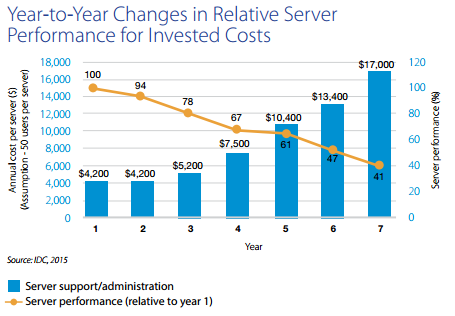
Cloud technology enables businesses to shift the initial heavy front end CapEx to a manageable OpEx. Further more, most cloud platforms have a pricing calculator to estimate the cost of using their products, services, and resources.
Cloud Computing
The large CapEx of an on-premise server naturally results in the aspiration of keeping this tangible asset as long as possible. Ideally, until its dying breath. However, the mechanical parts within the server such as the hard drive and fans will get louder and eventually the wear and tear will lead to failure. Other than the mechanical restrictions, storage and memory capacity will shortly become scarce. These problems are exasperated when the technological curve moves forward. Today we have 4k videos, tomorrow we will have 8k, and then 16k a few days later. The 10 year old server, with a "large" 50TB hard drive, will be become ancient and incapable of carrying out its duties for much longer.
This is where cloud computing comes in. You no longer need to worry about the expensive server and dragging it on until its dying breath. Cloud platform providers update and maintain the infrastructure, while also allowing you to use the latest chip technology, such as Google's Tensor Processing Unit (TPU). Seeping the benefits of Moore's Law.
Moore's Law
Moore's law shows us that computer processing speeds double every 18 months while becoming cheaper to manufacture. Apple's M1 chip has pushed the boundaries for computer chips and has made many question the longevity of Intel's dominance in the market. Without sounding like the Greek mythological Hydra Monster that would regrow two heads for every chopped off head, even if silicon-based chips hit a wall, two more solutions will spark to life. Perhaps, Quantum Computing, Graphene/Carbon Nanotubes or Nanomagnetic Logic?
The possibilities of faster and superior chips that can bring to humanity is endless and unimaginable. The first iPhone was released 14 years ago, in 2007. In just a short 14 years the world has changed and in that time technology based companies have taken over. Out of the 10 most valuable companies in the world 9 of them are technology companies. In 14 years, the future of technology will be unrecognizable from what it is today. This is why embracing the change and modernisation of your IT infrastructure is critical for your business' success.
Types of Cloud Computing Services
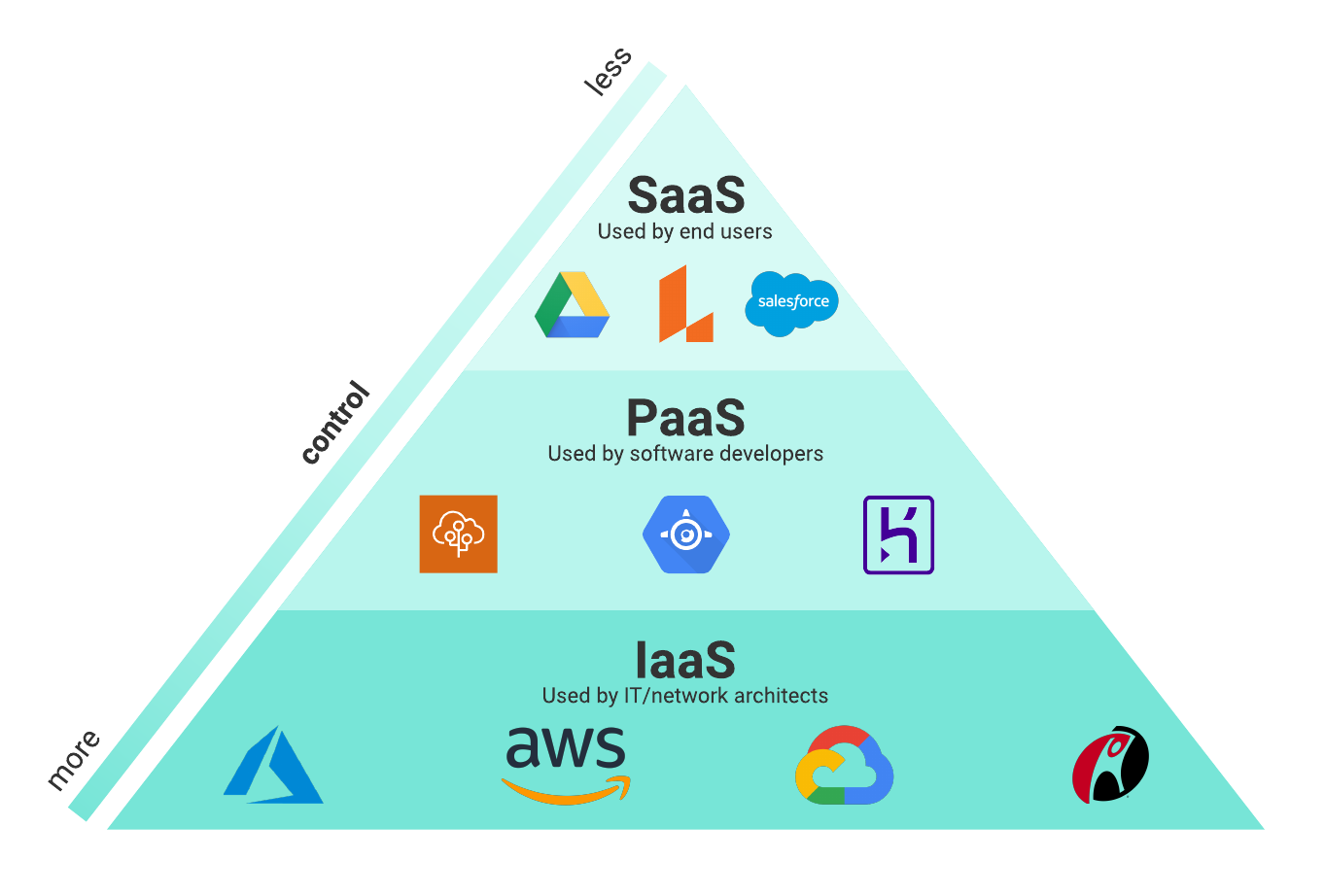
Each type of cloud computing service provides different levels of control, flexibility and management so that you can select the right set of services for your business needs. The levels are used by and require different skill-sets and roles within the organization.
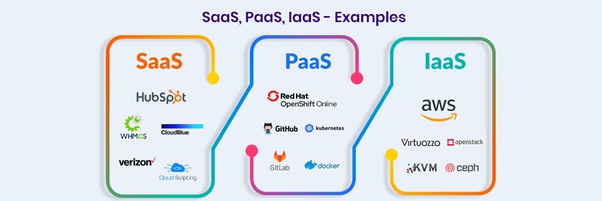
There are three main cloud computing services:
Infrastructure as a Service (IaaS) provides maximum flexibility when it comes to hosting custom-built applications, as well as providing a general data centre for data storage. You are responsible for choosing, configuring, administering and monitoring the system's components. The platform provider will ensure that resources are available, reliable and ready for you to use. You must provision and manage them, the benefit of this is complete control of the systems and unlimited flexibility.
Building an IaaS offers complete control, allowing you to select which global regions and zones you deploy resources. Optimizing where data is stored allows your application to work faster in those regions. For example, storing data in a data centre in South America, when most your data consumers are in Europe, will increase latency. I recommend you read the other benefits here and Microsoft's paper on Enabling Data Residency. The aim of being able to store data locally aids the business to deliver an application that has low latency and avoid running afoul of a country's privacy laws.
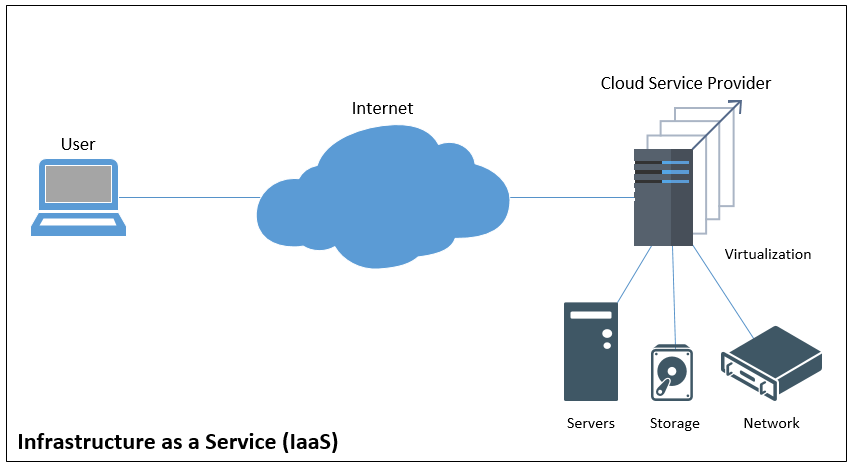
Amazon Web Service has an managed compute service called Elastic Compute Cloud (AWS EC2). Google Cloud Platform has Compute Engine. Microsoft Azure has Compute services. All are IaaS offerings.
Platform as a Service (PaaS) is most often, built on top of an IaaS platform in order to reduce the need for system administration. It allows you to focus on application development instead of infrastructure management, underlying hardware & operating software patches, or any of the other undifferentiated heavy lifting involved in running your application. Therefore, you only manage the applications and services being developed, and the cloud service provider typically manages everything else. If traffic to the application increases, the cloud provider automatically scales the systems to provide those resources.
Getting started with a PaaS, can allow you to scale your application. The application can be built with numerous languages: Python, Java, Node.js or with .NET. For Python you can use Flask or Django. A CI/CD pipeline can be built on top of your application by using many tools, for example, Git, Github Actions, DockerHub and Atlassian Bitbucket.
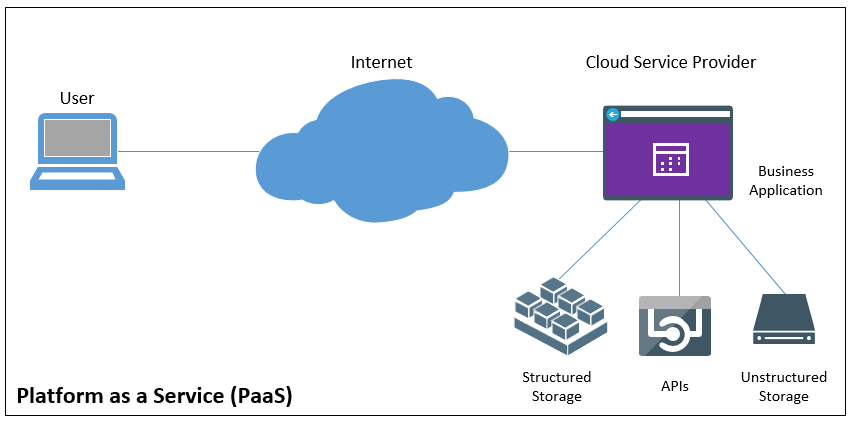
Some cloud platforms have partners, which would enable you to use a cloud platform as a SaaS where they essentially create a software "wrapper" around your PaaS infrastructure. This means you do not need to upskill your team to understand cloud technology, the cloud migration process or the ongoing management of cloud infrastructure.
Amazon Web Service offers Elastic Beanstalk. Google Cloud Platform offers App Engine. Microsoft Azure offers App services. All are one of the many PaaS solutions.
Software as a Service (SaaS) offers ready-to-use, out-of-the-box solutions that meet a particular business need (such as a messaging service or email software). Most modern SaaS platforms are built on IaaS or PaaS platforms.
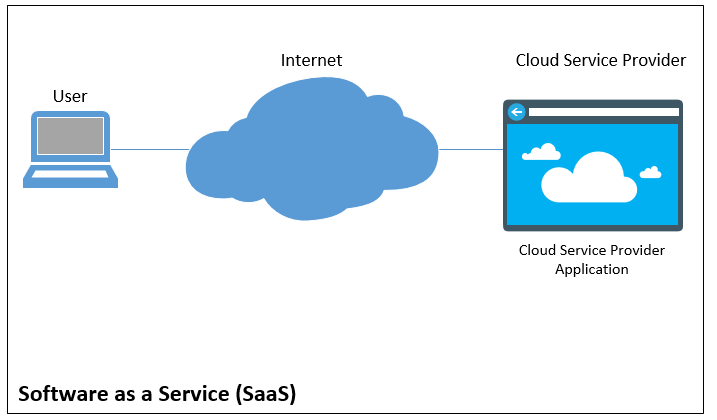
There are many examples of SaaS, such as, Office365, DropBox or Slack.
Other types
Generally speaking, cloud service platforms fall under one of the three solutions. However, there are other services out there, such as Function as a Service (FaaS) and the Hybrid Cloud version.
Function as a Service (FaaS), also known as "Serverless Computing", is where you simply deploy your code and the service automtically runs it. With FaaS, the user develops, runs, and manages the application functionalities without the complexity of building and maintaining the infrastructure, typically, associated with developing and launching an app. This may sound similar to PaaS, but with PaaS you need to think about scaling your application. A stand out benefit of FaaS is that it can scale horizontally.
Amazon Web Service offers Lambda. Google Cloud Platform offers Cloud Functions. Microsoft Azure offers Functions. All have a serverless computing approach.
Hybrid Cloud is not strictly cloud computing, but a mixture of one of the service types and on-premise servers. The Hybrid deployment solution connects infrastructure and applications between cloud resources and resources that are not located on the cloud. Read this White Paper by Aws.
A bank, or government would opt for this sort of solution with the sensitive data that they have and laws that require data being stored on-premise. They would also demand and require low latency solutions. All the major cloud providers can offer this service.
Implementation
All cloud platforms offer many solutions and services that are capable of being tailored to each user. Generally, AWS and GCP opt users towards their IaaS solutions, while Azure opt for a PaaS.
Not every part of your company’s existing infrastructure may be built for the cloud. If some elements cannot be cloud-enabled successfully, you might have to switch various applications and programs to integrate fully. The Minimum Viable Cloud (MVC) is a good practice on how to get started, along with this 12 step guide.
Most companies get started with the cloud through either IaaS or SaaS. IaaS has the same model but replaces existing infrastructure with a cloud providers. SaaS are for those that do not have the technical cloud knowledge or staff, but are seeking to enable more use cases for their data. Most companies get started with the cloud with SaaS as it works fine for most employees within their business. But as your company grows, you will need more flexibility. Therefore, a PaaS solution is the way to go. Another analogy to help you understand the differences between the cloud services is shown on the figure below.
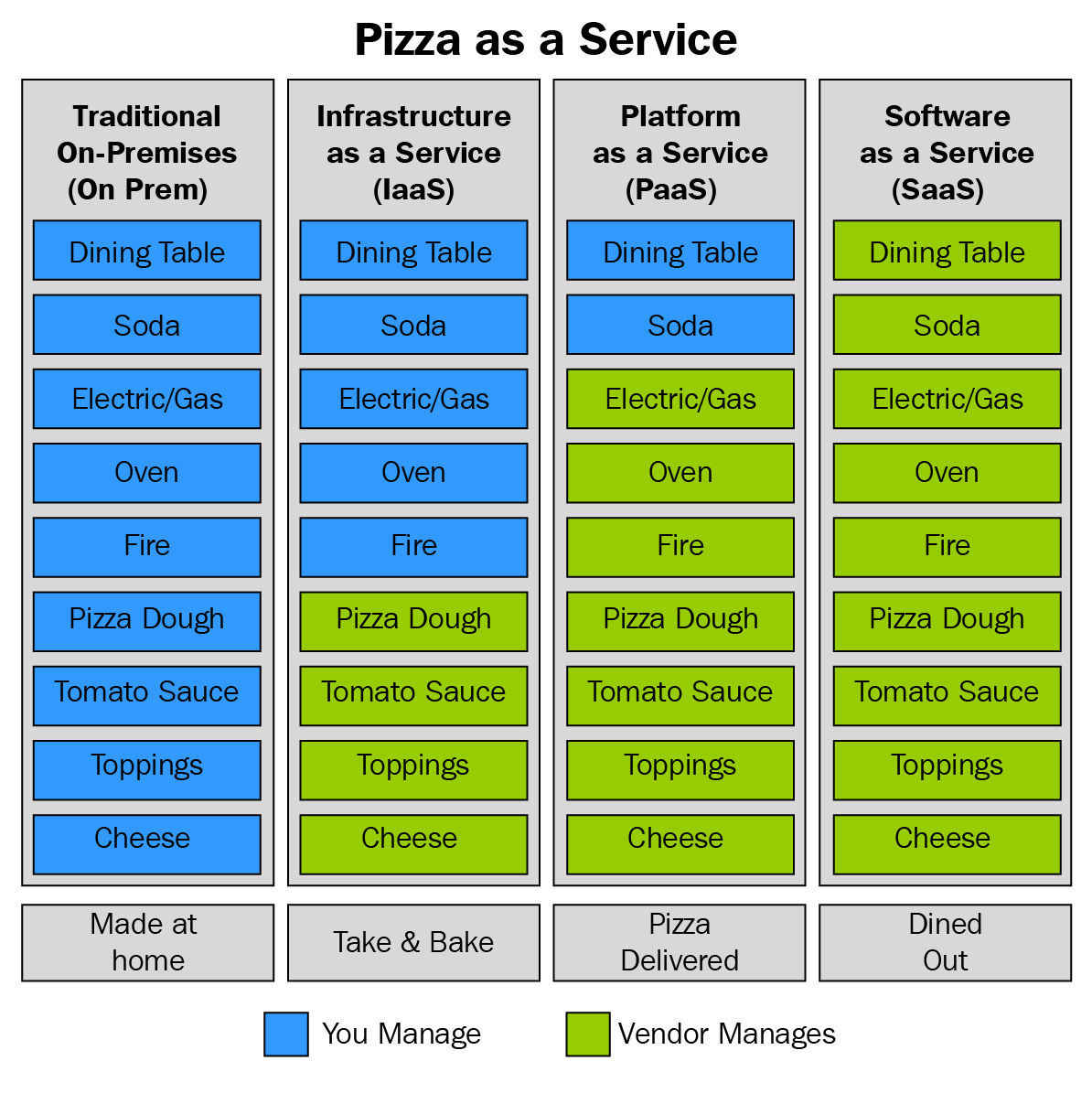
Conclusion
Although this is not a technical cloud computing blog I hope it has helped clear the solutions being offered by the major cloud platform providers. A data scientist does not need to know the ins and out of all the services each cloud provider offers. Instead, understanding the basic blocks and differences between cloud computing services is beneficial. The next step would be to understand cloud infrastructure, which will be covered in a later blog.
Embrace the change, implement changes in stages, outline the benefits and communicate frequently to the team.
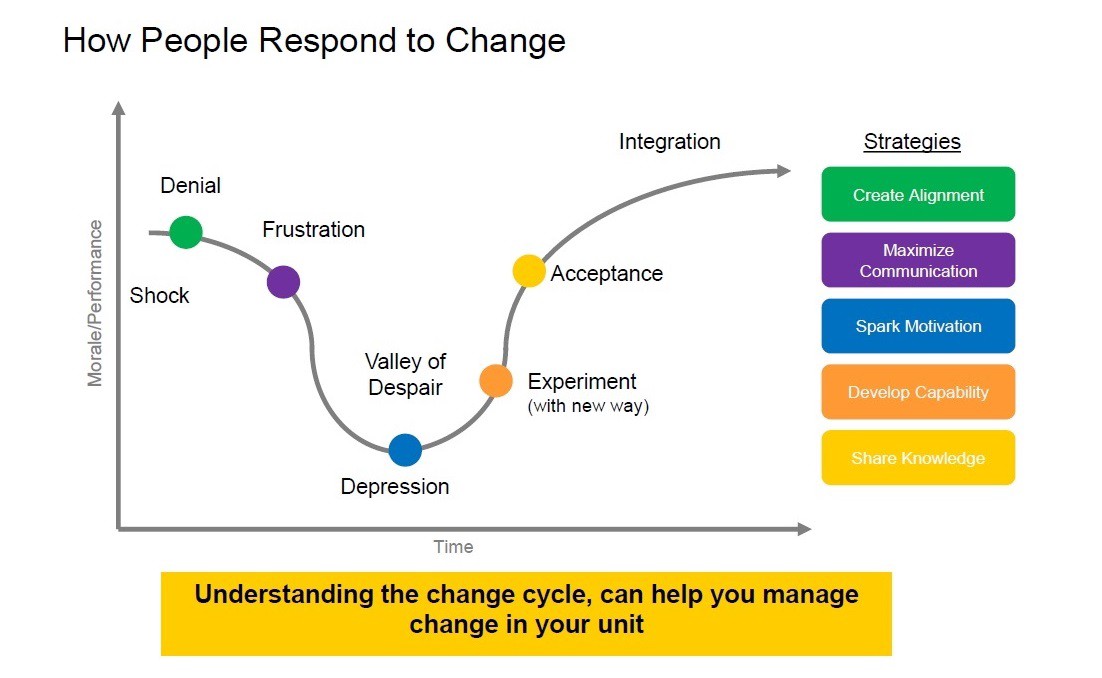
Ultimately, you have the final decision. Do you want to upskill and get with the times or be left behind?